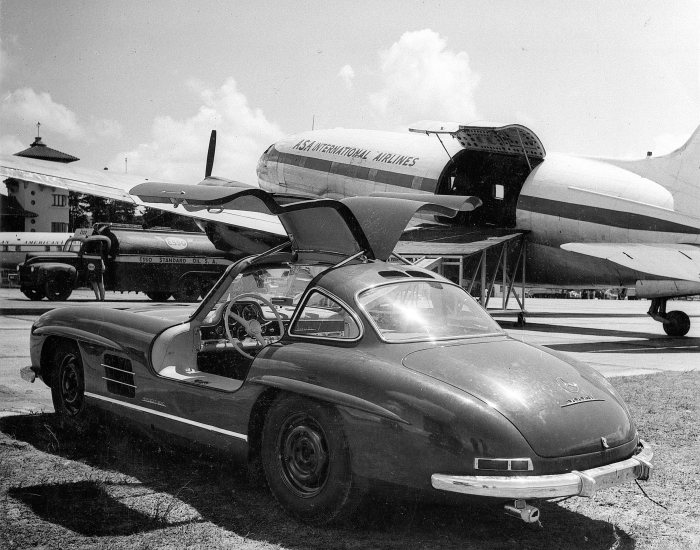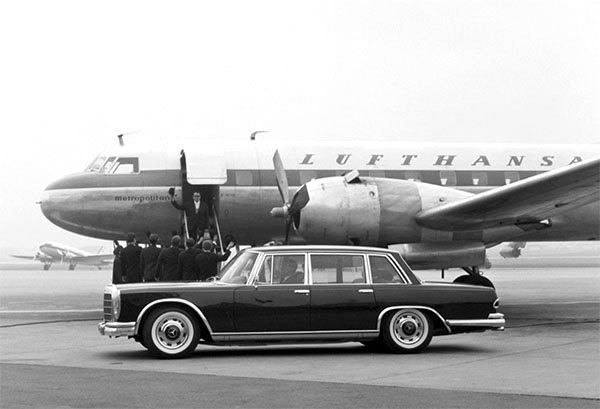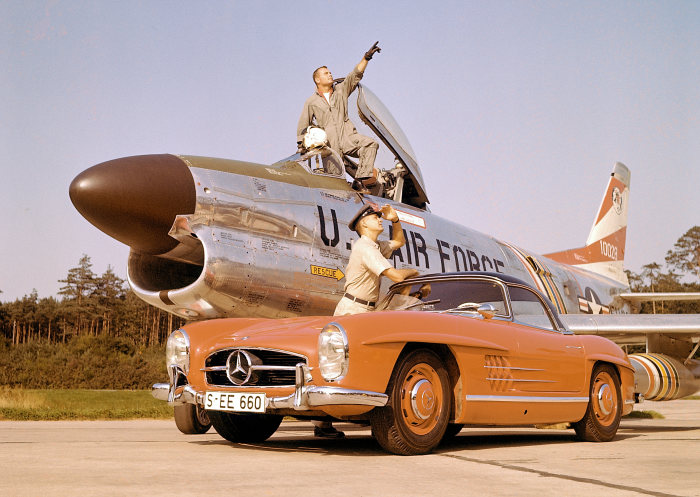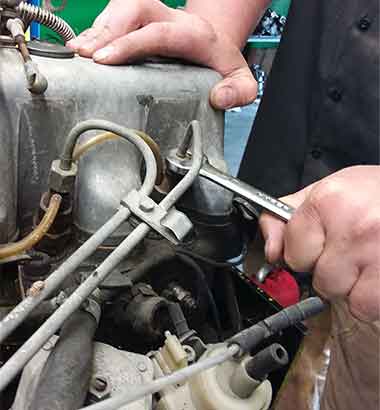When Mercedes Engines Ruled The Air
Posted by Cassy Leone on Oct 5th 2021
When Mercedes Engines Ruled The Air
By: Cassy Leone
“The common sight of an airplane speeding across the skies arouses little wonder in the child of today. Yet the fact that such man-made contrivance can leave the ground at all without any apparent movement of its component parts, with the exception of the rotating propeller, is surely amongst the most remarkable phenomena imaginable.”
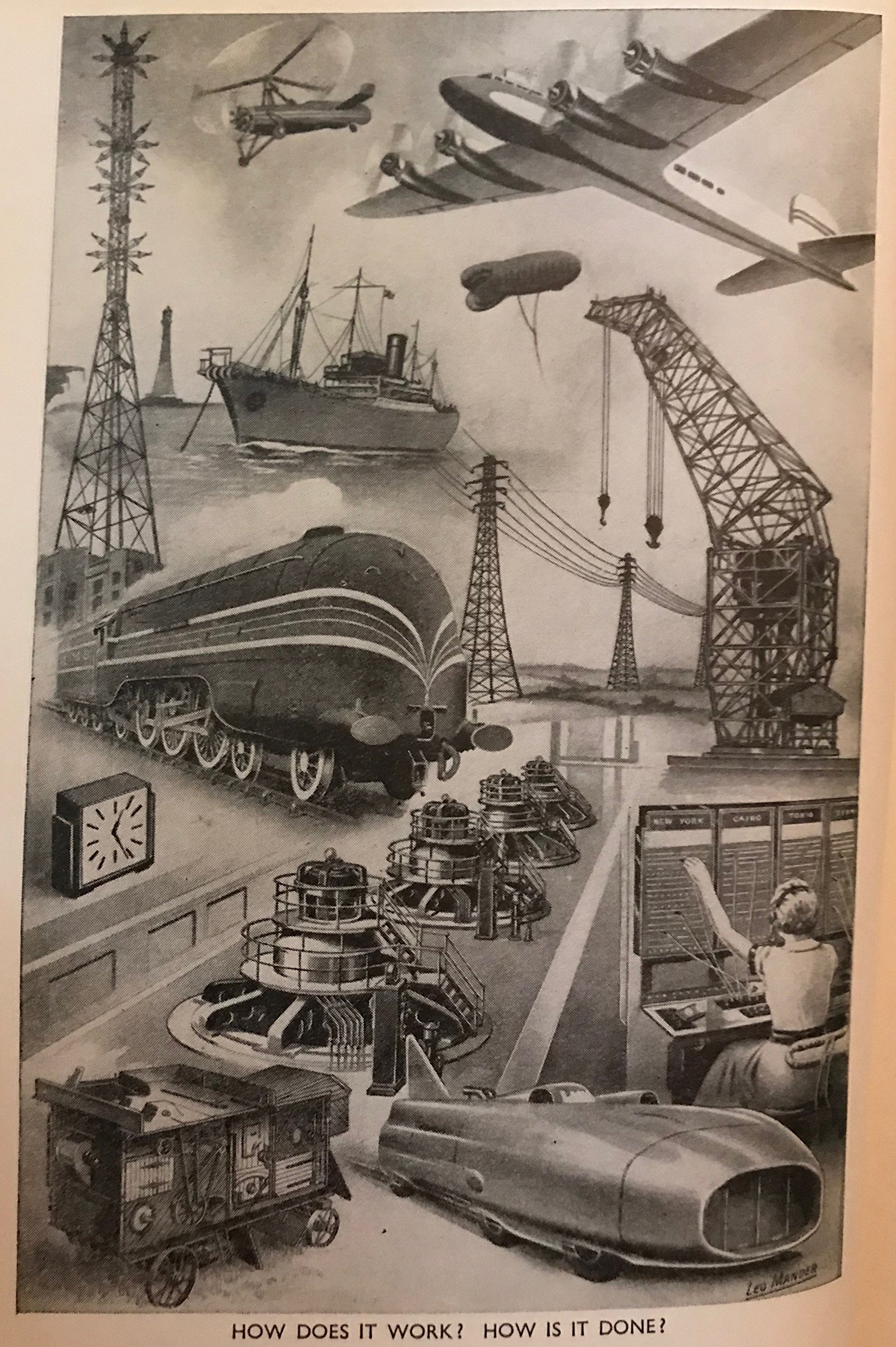
The above passage came from a book first published in 1941 called How It Works: An Encyclopedia Of Mechanical Knowledge. When I was young, it was a fascinating look into the operation of machines from steam power to the invention of the television. My favorite section was on aircraft, as the book used beautiful hand-drawn engineering sketches to bring these relatively complex topics to life. Using it, and my small collection of aeronautics books that have fascinated me for years, I’ll tell you all about a side of Mercedes-Benz you might not have known. There was once a time when Mercedes engines powered some of the most famous, and infamous aircraft the world had ever seen.
Before we begin, it might be good to note the different types of aircraft engines in use during the early twentieth century:
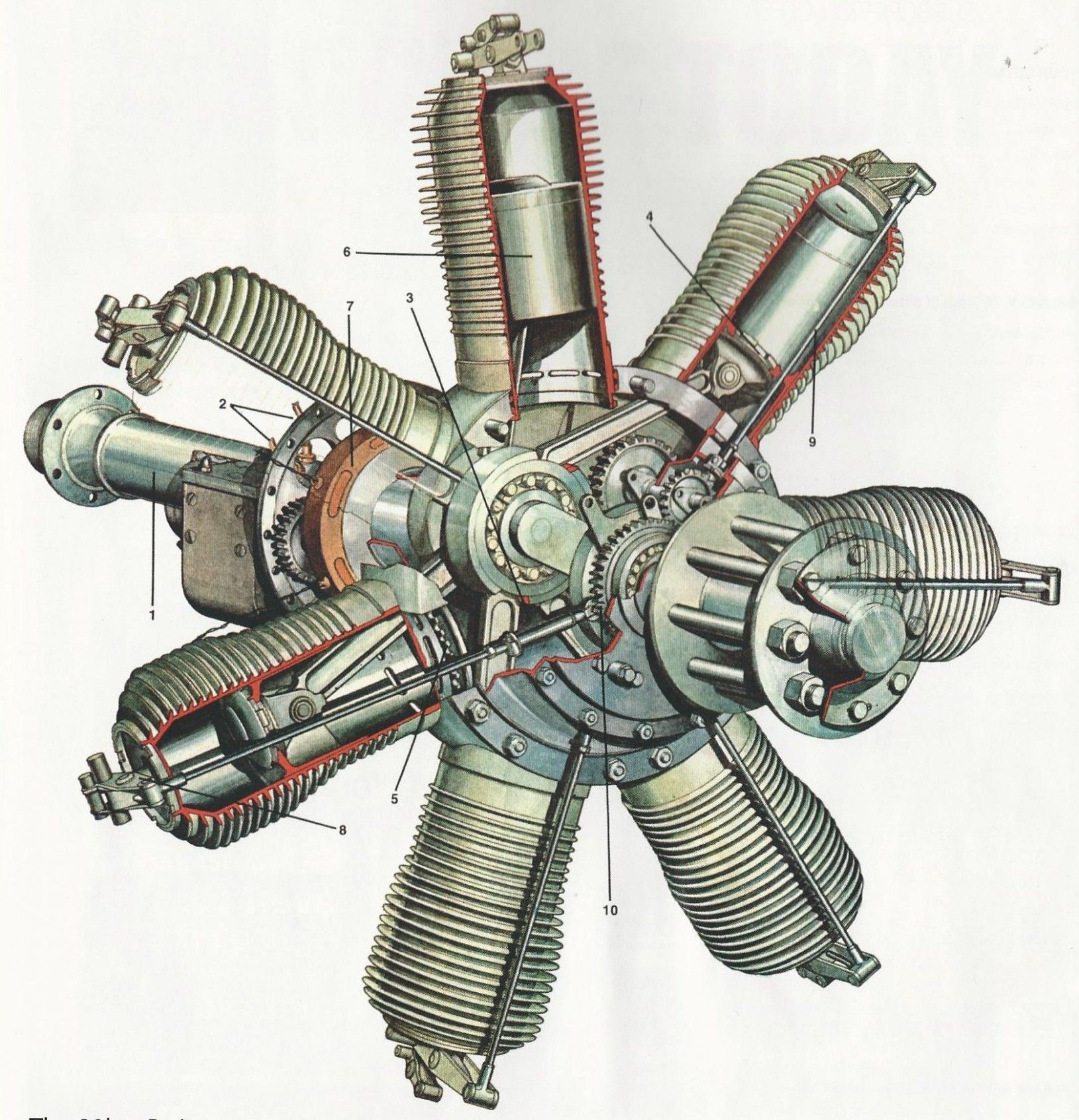
Rotary: This is not the rotary engine you may be familiar with, such as those found in certain early Mazda vehicles. This type of engine, known more specifically as the Rotary Aero Engine was unique in that instead of the propeller being driven by a crankshaft that was spun by pistons that fired off in opposition to one another, the crankshaft stayed bolted in place while the entire engine, cylinders and all, is what spun and the propeller would be attached to it. This design was common in the early days of aviation but was quickly phased out due to the difficulties inherent in the design. Oil was sent in at total loss, meaning there was no way for the engine to reuse the oil it was consuming. It would be stored in the hollow crankshaft and flung out from the middle by the force of the rotation. It would be consumed and expelled by the exhaust, similar to a two stroke engine of today. As these engines grew larger, they became harder to manage because all that weight was spinning around on the front of what were very light and flimsy machines of the time.
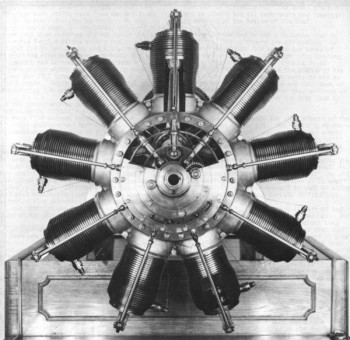
Radial: These are the airplane engines most people are familiar with, as they have a very characteristic design. Much like the Rotary Aero this engine featured a propeller attached to a crankshaft that was spun by a bank of cylinders cet in a circle around it. These cylinders would be finned to aid in cooling, much like a motorcycle engine. While nowhere near as common as the In-Line and V type engine nowadays, it remains iconic in aircraft engine history.
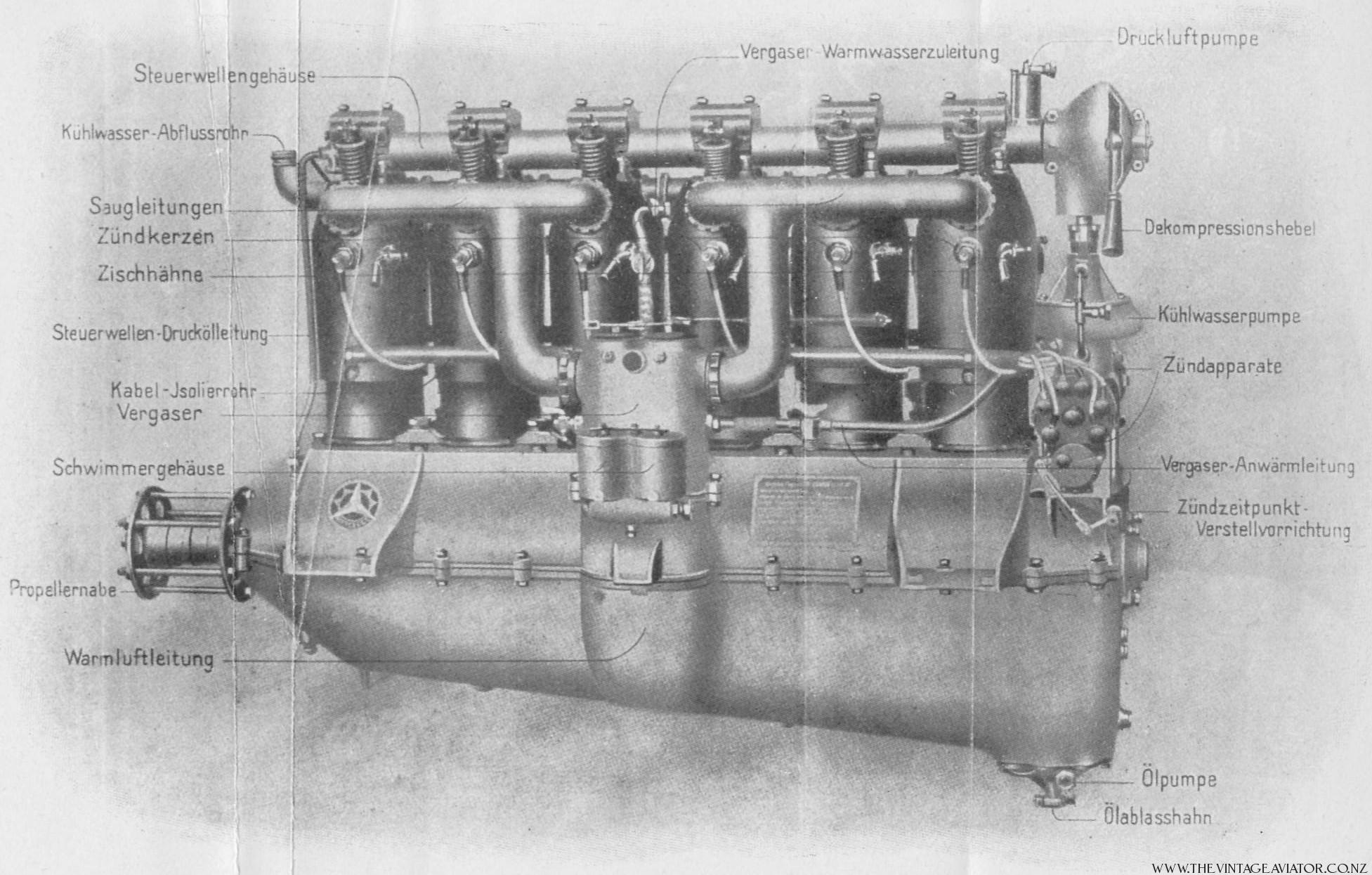

In-line and V: Very similar to a car engine, this design uses a row of cylinders placed in a line or a V-shape that drives a crankshaft that spins the propeller. These engines may use air cooling or liquid, though the latter became the most efficient choice with the invention of ethylene glycol used in their radiators. These were the type of engines that Mercedes-Benz produced in the field of aeronautics.
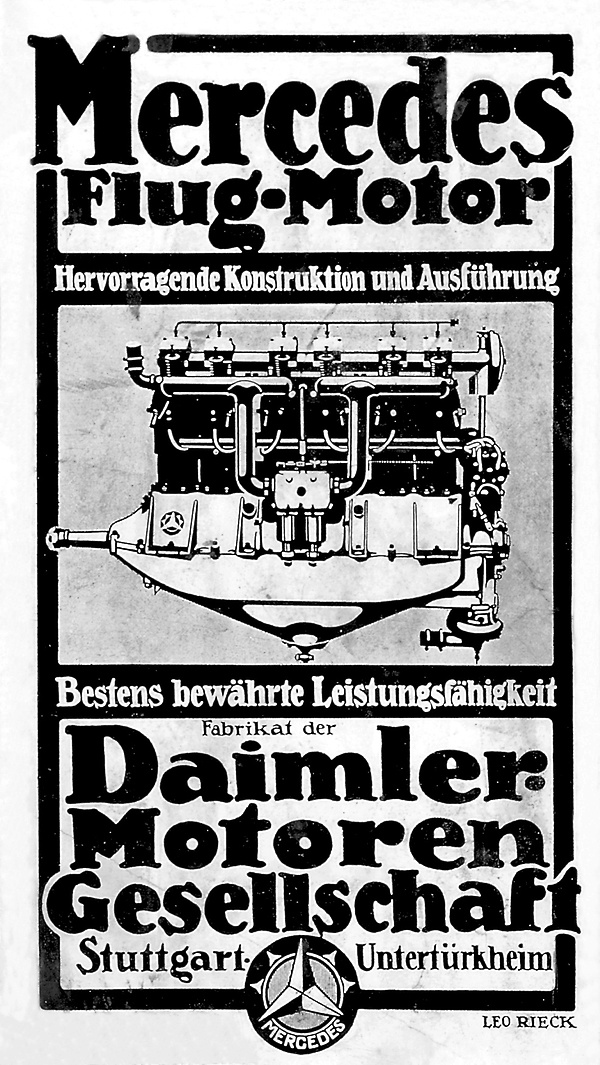
The First World War: Mercedes Takes Flight
It all started in 1913, with the development of the Daimler D.1 aircraft engine. This was a six-cylinder, water-cooled engine that made 100 horsepower and was used in the early days of the First World War. Improvements made to it developed into the second and third iterations of this design, known as the D.II and D.III respectively. The third generation of this engine was widely used in the First World War and powered many famous aircraft of the time, such as the Fokker D-VII. An interesting thing to note is that after the war in November of 1918, Anthony Fokker moved to Holland and took with him some 400 D.III Mercedes engines and 120 aircraft components. This was a violation of the Treaty Of Versailles, but meant that the D-VII fighter plane would be produced for a number of years following the conflict.
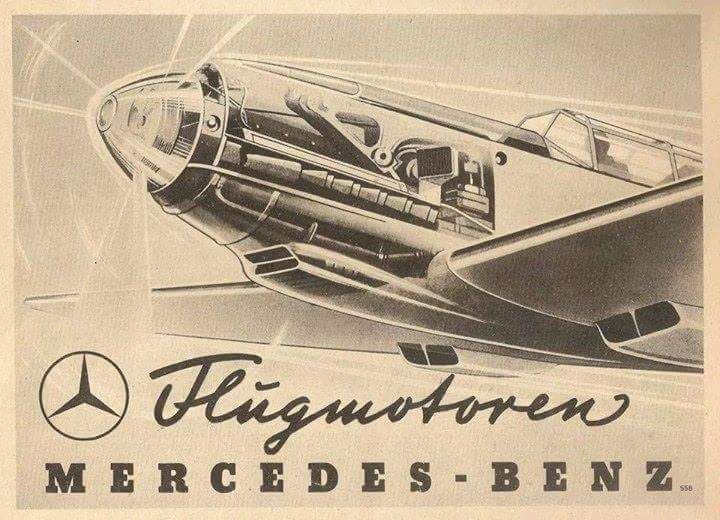
Fire and Fury: The 1930’s and 1940’s
After the end of the Great War, Germany and her people found themselves on a long downhill slide. Their military was in shambles and their currency was so devalued that people were using it to paper their houses for insulation. As the grip of fascism began to tighten around Germany, the national identity had found a new, deeply troubled lease on life.
Daimler (now Daimler-Benz since 1926) found itself along with several other companies being tasked by the Bundesministerium der Verteidigung, or the Federal Ministry Of Defense, to create engines that would be used in German military and civilian aircraft. This began the development of the longest running production engine Mercedes would create during this time, the 600 series.
This engine was a liquid cooled inverted V-12 design. This meant that the crankshaft was at the top of the engine bay and the pistons at the bottom. This allowed for greater visibility by pilots using it in single engine aircraft and allowed the propeller more ground clearance. The first 600 series engine would be replaced by the 601 and 602 models, both using an incredible new technology at the time that wouldn’t see widespread use in passenger cars until almost a decade later… fuel injection. This, along with supercharging allowed the Daimler-Benz 600 series engine to be used in two of the most notable aircraft of the twentieth century:
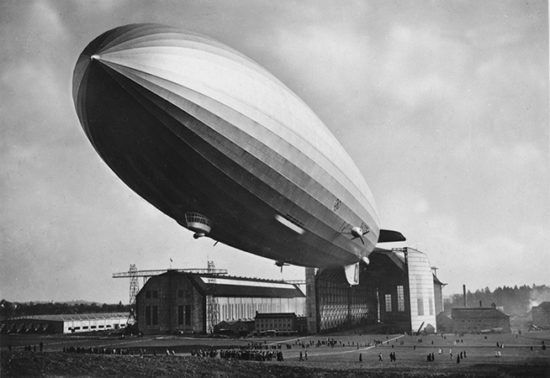
Hindenburg LZ-129- Yes, that Hindenburg. Construction started in 1931, but lagged due the economic effects of the Great Depression. The Nazi Party’s rise to power in 1933 gave the shot in the arm that the ailing Zeppelin Company needed. Under the watchful eye of Propaganda Minister Joseph Goebbels, the largest man-made object ever to take to the air was completed on schedule. Powered by four DB 602 diesel engines, it made ten cross Atlantic flights to the United States and eight to South America. It was host to the first Catholic Mass done aloft and was the subject of an NBC radio broadcast where a recital was played on the airship’s specially made aluminum piano. This massive airship, the last word in luxury air travel, met a fateful end in Lakehurst New Jersey in 1937. The engines were refurbished after the accident and were used in other aircraft with no notable issues thereafter.
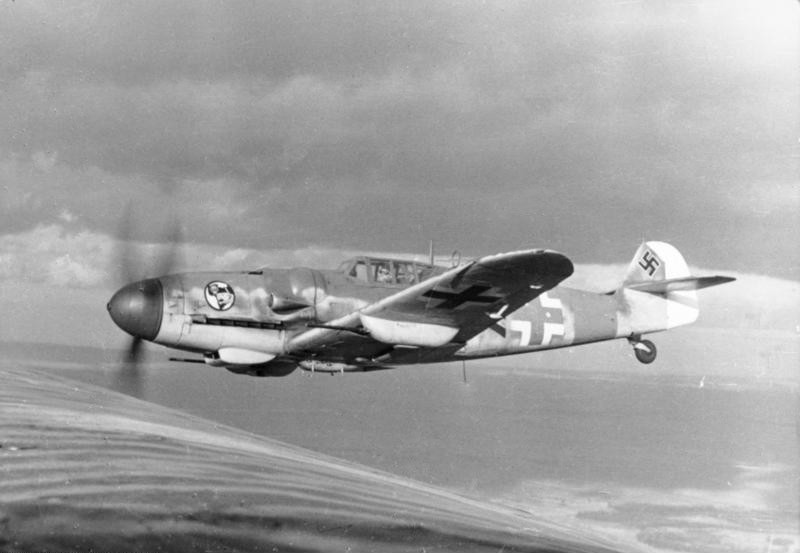
Messerschmitt BF-109- This fighter, along with the Focke-Wulf 190 were the backbone of German air power. Designed in 1934, it saw use right up until the end of the Second World War. The plane was very lightweight, thanks to many of its components being manufactured as single pieces and the landing legs being attached to the fuselage instead of the wings. This gave the aircraft a very steep angle upward and made it difficult for some novice pilots to land, leading to accidents due to poor visibility. This fighter was heavily armed and very agile. The world got its first glimpse of it along with the Hindenburg at the infamous 1936 Olympics. It was powered first by Junkers made engines, and then by the much more powerful DB 601 and 605 as output increased. The BF-109 holds the title as the third most produced aircraft of all time, falling just behind the Ilyushin Il-2 ground attack aircraft also made during the conflict and the Cessna Skyhawk, which is still in production today.
End Of The Line
The end of the Second World War saw the end of Mercedes as an aircraft engine manufacturer. With many of its factories destroyed, Daimler-Benz found itself on the back foot and needing to rebuild from the ground up. Improvements made during the war to engine cooling, ignition, and fueling allowed Mercedes to create some of the most well known cars of their history, such as the W186, a followup to the wartime W150 that came before it.
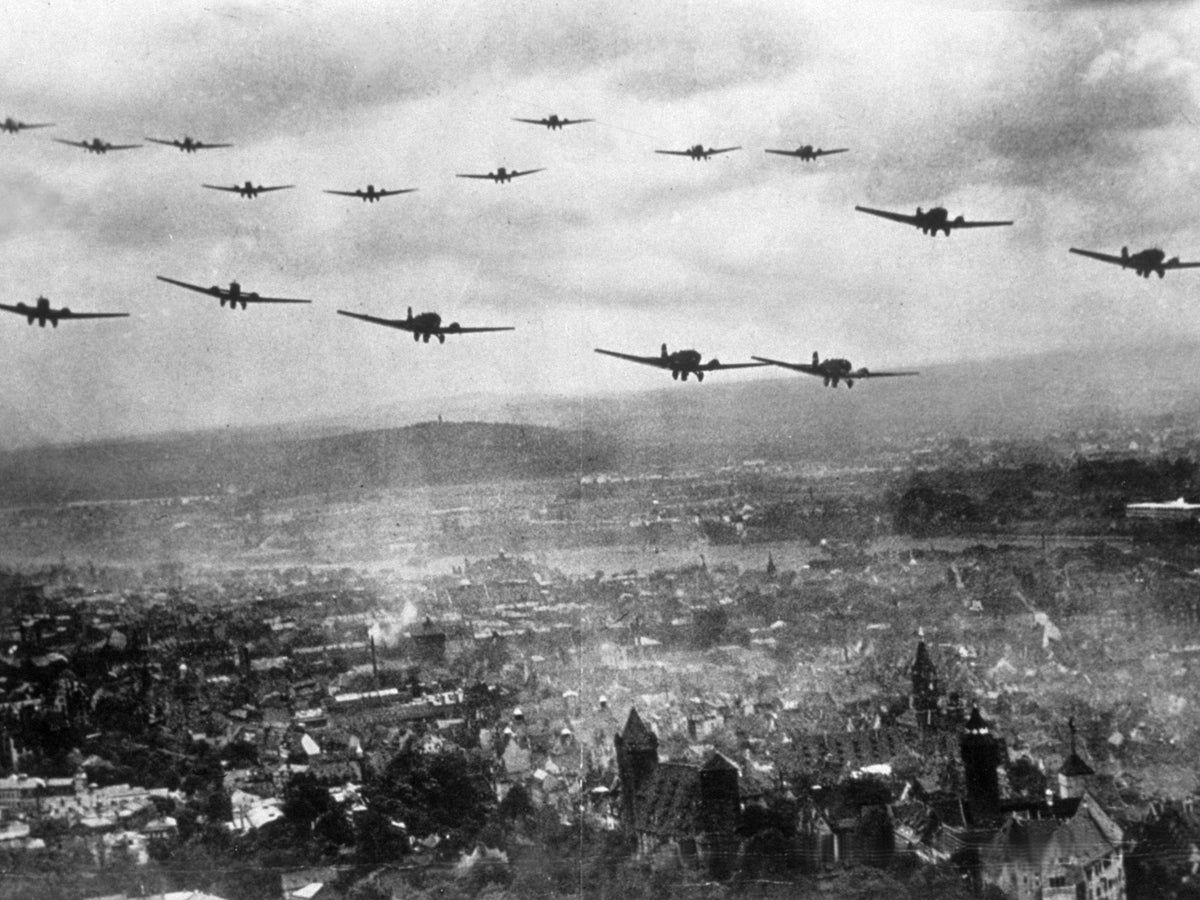
History is often a confusing, messy thing to study. While Mercedes as a car company is known for being the height of German luxury, and is enjoyed by a huge following of people all over the world, it was a company that had a hand in shattering the skies over Europe just eighty years ago, allowing the Nazi military to conquer a significant portion of the continent. While the sound of a Mercedes engine will delight many nowadays, there was a time when that was not always the case. To quote the war correspondent Ernie Pyle:
“In their eyes as they pass is not hatred, not excitement, not despair, not the tonic of their victory - there is just the simple expression of being here as though they had been here doing this forever, and nothing else.”
However, the war did come to an end. Time passed, and through the years Mercedes has become a household name for an altogether more positive reason. They have a loyal fanbase and those dedicated to keeping their classic vehicles on the road. While taking the time to look back, we will move forward into the future. Let us move forward together.

